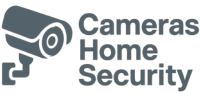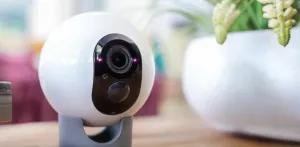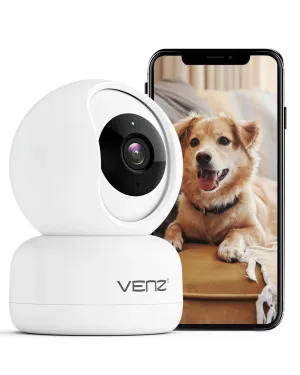The Real Price Tag of Home Security: What to Know Before You Buy
Last summer, after a spate of break-ins in our quiet suburb, my neighbor and I spent an entire barbecue swapping home security tips instead of our usual rib recipes. That's when I realized: It was time to bite the bullet and invest in a home security camera system. Let me take you through what I learned, from unexpected costs to smart saving strategies, so you can make a truly informed decision.
Starting Out: The Basics of Home Security Camera Systems
Before diving into prices and technicalities, let's talk about what a modern home security camera system can comprise. Essentially, these systems vary from simple single-camera setups to complex multi-camera networks, featuring live feeds you can check from your phone,night vision, and motion detection alerts.
- Wired vs. Wireless: Wired cameras are generally more reliable but harder to install, while wireless cameras offer flexibility and easier setup but can suffer from interference. (gensecurity.com)
- Storage Options: Cloud storage plans come with a monthly fee, while local storage usually requires no ongoing costs but needs more upfront setup and maintenance.
- Field of View: This determines how much area your camera covers. A wider field can reduce the number of cameras you need.
- Resolution: Higher resolution cameras provide clearer images but can be more expensive.
After deciding on the type of system that might fit your needs, it's essential to understand the costs involved. Here’s where it got interesting for me—and a bit overwhelming.
What's It Going to Cost Me?
When I started pricing out options, I quickly learned that the cost of home security cameras spans a huge range. Simple setups can run as low as $50, while high-end systems can climb to $2,000 or more, not including maintenance and monitoring fees. Here's a breakdown of what you can expect financially:
- Hardware Costs: The cameras themselves can vary greatly in price. A standard camera can cost about $100, but more sophisticated options with features like facial recognition can go up to $400 per camera.
- Installation Fees: Professional installation can range from $100 to $200 per camera, depending on the complexity of the system. DIY installation can help save these costs, but only go this route if you’re confident in your tech skills! (getsafeandsound.com)
- Monitoring Services: These can be optional but useful. Costs typically range from $10 to $50 per month, depending on the level of service you choose.
- Additional Accessories: You might need extra mounts, added storage, or additional Wi-Fi extenders, which can add to the initial investment.
And here's something I didn't consider initially—the ongoing costs. The monthly monitoring, the potential need for software updates or added features, and maintenance. It all adds up.
Hidden Costs You Might Not Expect
It’s not just about buying the cameras and getting them installed. Here are a few hidden costs that caught me off guard:
- Increased Energy Bills: Continuous operation of cameras, especially those recording 24/7, can up your electric bill. (reolink.com)
- Internet Upgrades: High-resolution cameras need a good Wi-Fi connection. I had to upgrade to a better broadband plan to handle the extra load.
- Maintenance: Cameras outdoors can get dirty or damaged. Regular cleaning and occasional repairs or replacements can add to costs.
- Privacy Concerns: This isn’t a direct financial cost, but using cameras could lead to privacy issues you’ll need to manage, such as ensuring your cameras don't inadvertently record outside your property.
Once I tallied up these hidden expenses, I was a bit overwhelmed but better prepared for the total commitment.
Ways to Save Without Skimping on Security
After the initial sticker shock, I got creative with ways to cut costs without cutting corners on security:
- Opt for a Mixed System: Combine a few high-quality cameras with basic models to cover less critical areas of your home.
- DIY Installation: If you’re handy, installing the system yourself can save a lot upfront. Just make sure you understand all the installation guidelines and setup properly.
- Look for Deals and Rebates: Manufacturers often offer discounts or bundles that can lower hardware costs. Keep an eye out around major holidays or shopping events.
- Consider Lesser-known Brands: Some newer or less popular brands offer comparable quality at a reduced price. Just ensure they have good reviews and reliable customer support.
I decided to mix DIY with professional help, setting up the indoor cameras myself and hiring a pro for the trickier outdoor installations.
Final Thoughts: Is It Worth the Investment?
Installing a home security camera system is not just a financial decision but a lifestyle choice. For me, the peace of mind knowing my family and property are safer is absolutely worth the investment. Remember, the best system depends not just on your budget but also on your specific needs and circumstances.
If you’re considering it, my advice is to think about not just the initial setup but also the long-term implications. Making an informed choice can save you a lot of headaches (and money) down the road. So, dive into the details, consider your options, and choose a system that offers both security and value.
And as for those bbq tips? Well, that’s a story for another day—turns out, security talks can get just as heated as the perfect grill technique!
Key Takeaways for Budding Security Buffs:
- Research thoroughly: Understand what kind of system suits your home.
- Beware of hidden costs: Factor in ongoing maintenance and utility bills.
- Get creative with savings: Mixed systems and DIY installations can help reduce expenses.
- Protection value: Weigh the costs against the security and peace of mind provided.
Happy securing, and maybe next time we can get back to those rib recipes!





